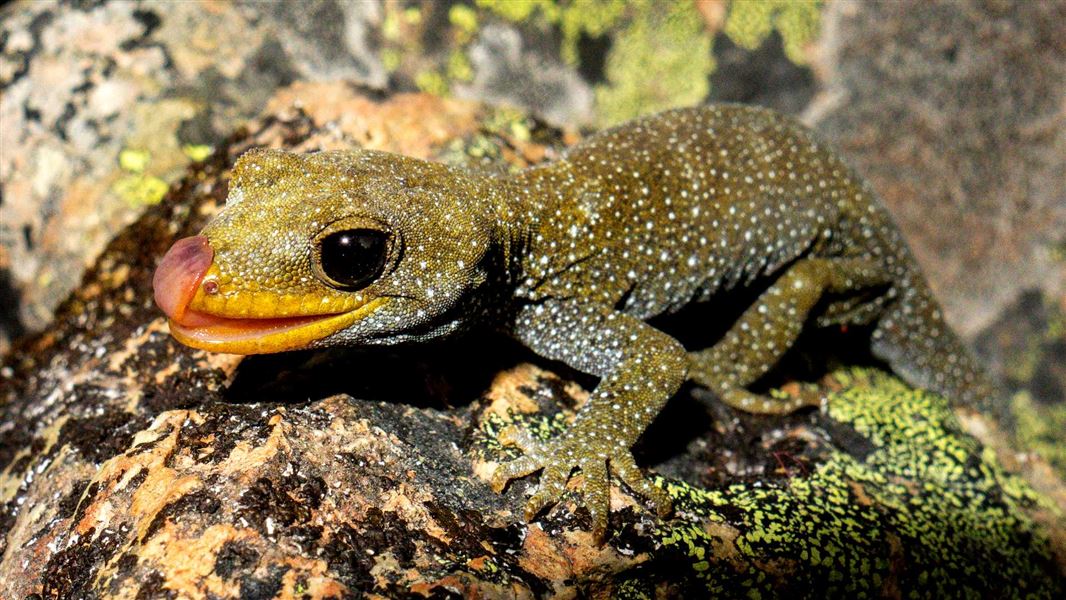Population: Unknown and declining
New Zealand status: Endemic
Conservation status: Threatened–Nationally Critical
Found in: Two mountain ranges in North Otago
Threats: Introduced predators, habitat loss and modification.
Hura te ao geckos (Mokopiriraukau ‘southern black-eyed’) have a name inspired by their colour pattern.
Hura is a te reo Māori word which means ‘reveal’. But, this word can also be applied specifically to the break of dawn. This concept ties in to features of the gecko such as the yellow around the mouth, as if like light appearing as the break of sunlight. It also captures the idea that this lizard has revealed itself to us.
About this gecko
These geckos appear to be nocturnal and live in steep, rocky, mountainous terrain. They have so far only been found in two mountain ranges in North Otago. But we suspect further surveys may reveal their population can extends into South Canterbury. We don’t know how many there may be due to its recent discovery.
Hura te ao geckos have proven difficult to locate. The rocky and cold alpine areas they stay in are hard to access. They include boulderfields, talus, and fractured and deeply creviced greywacke outcrops. There are also limited opportunities for researchers to search for them due to the climate they live in. This is because the geckos need warm, calm nights to become active and be seen. So we are working towards finding reliable detection techniques to record them.
Because of their preference for such areas, this gecko is thought to be an alpine specialist. However, the limits of how far it’s populations might stretch,.
Hura te ao geckos can grown up to 85mm from nose to the base of tail and weigh up to 14 grams. Like many other geckos, it eats insects and may also eat fruit.
What we’re doing to learn more
DOC is working to:
- collect data on their behaviour and habitat use in relation to the weather,
- test and develop detection tools to help search other populations, assess their numbers and spread at known sites,
- gather body data such as portions and weight (‘morphometric’ data) and
- gather breeding data to look at frequency and population growth rates.
We will use the data we collect to find out how to improve our ability to manage and protect alpine lizards. This will also help us to measure their recovery.
How you can help
We are keen to learn of any sightings of lizards in the area above the tree and shrub zones of South Island mountains. This is the alpine zone.
If you have seen a lizard in the alpine zone, we would like to hear from you. If possible, email lizardresearch@doc.govt.nz:
- a photo of the lizard
- a photo of the area where you found it
- the exact location you saw it
For guidance on how to take pictures and record information to help lizard conservation, see our report alpine lizard sightings page.
